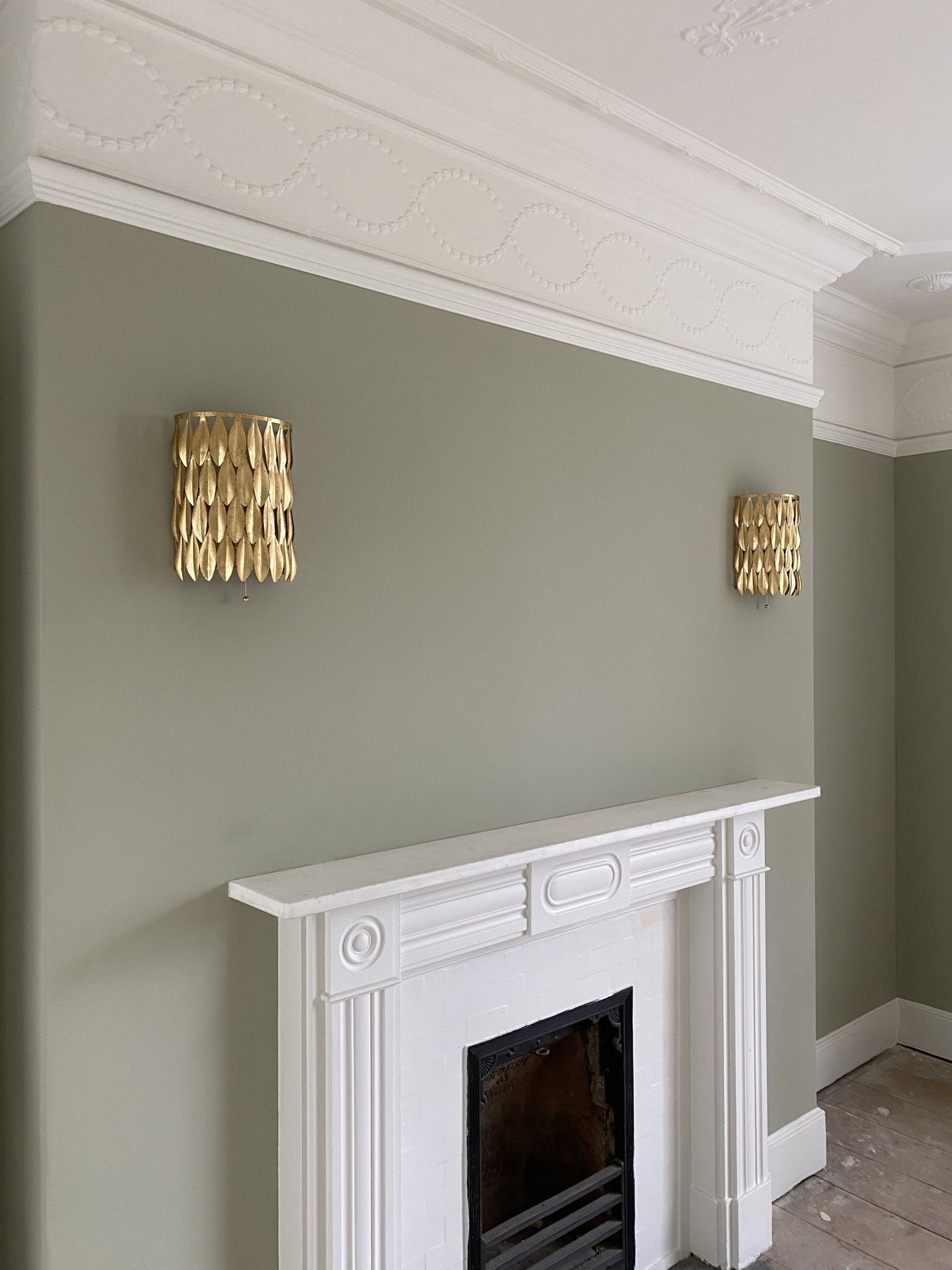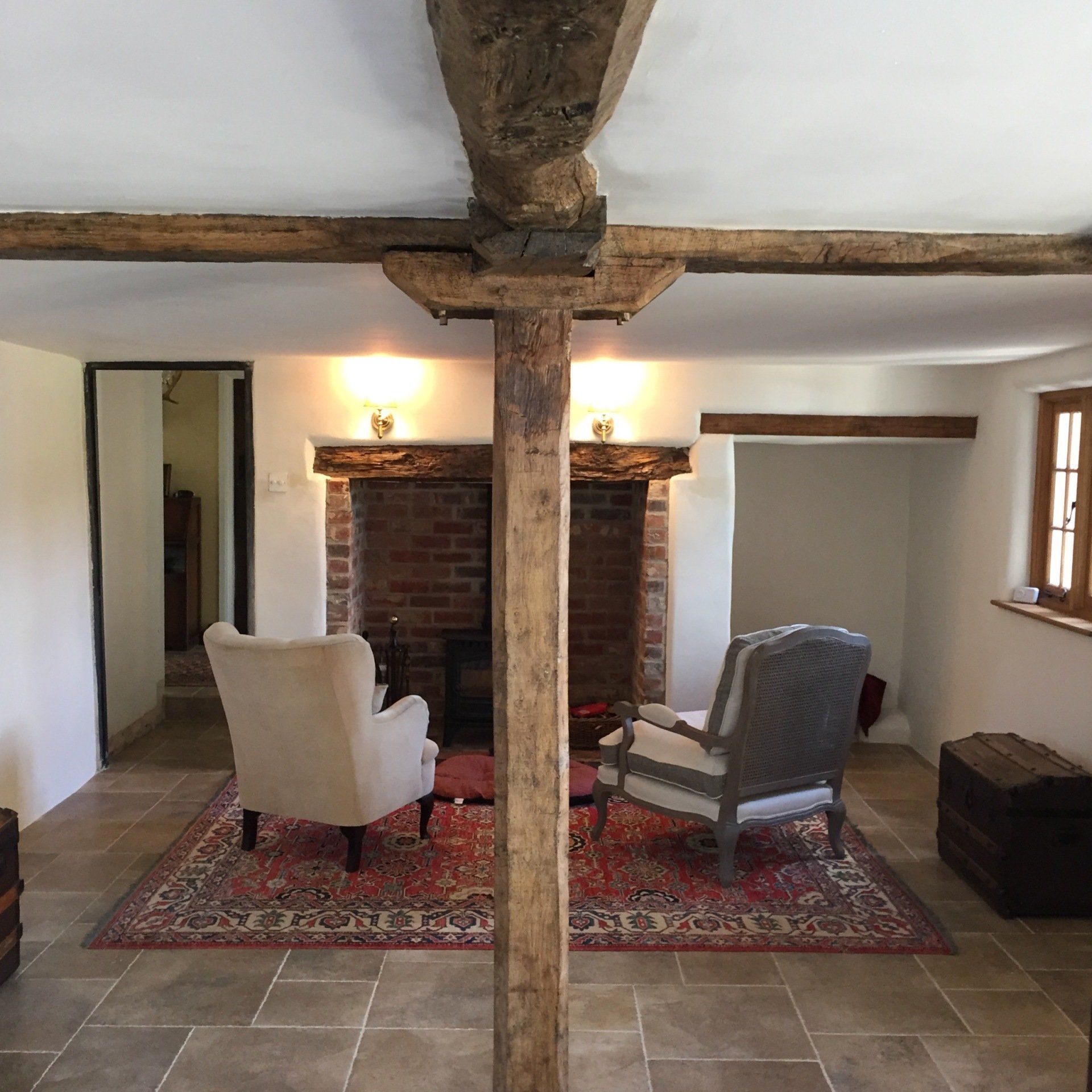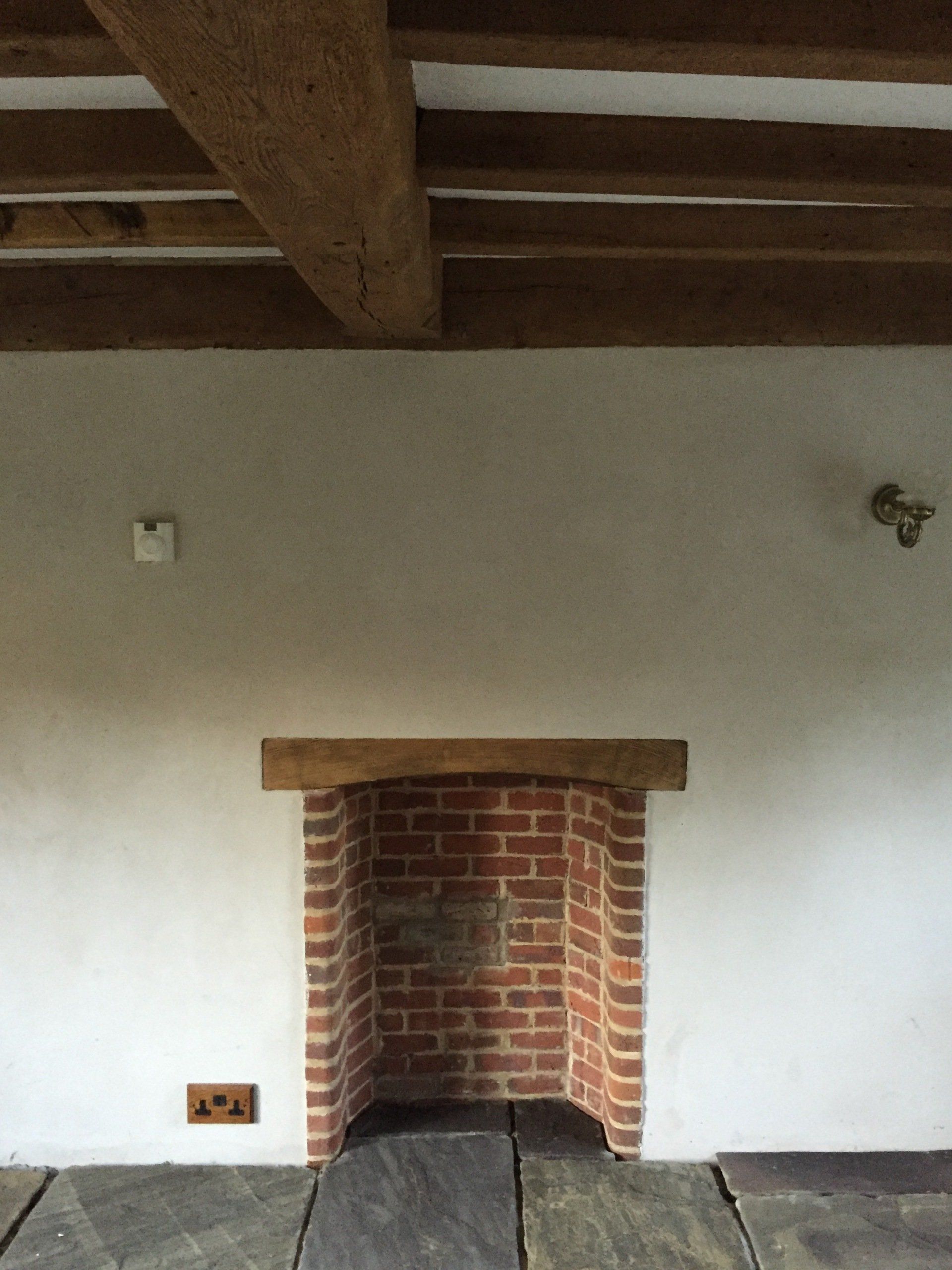Until the 18th century, most interior plasters were of non-hydrulic lime, at least on higher status buildings, and the tradition continued well into the 20th century.
Interior plasterwork varied from crude and simple applications to extremely refined and accurate work. It is best described by a number of constituent coats.
One coat work. The simplest plaster was one coat work used mainly for plastering onto solid walls of very utilitarian structures. Rarely applied to lath work.
Two coat work. Until the middle of the 18th century two coat work was common for most other buildings. On solid backgrounds, the base coat was termed 'scratch coat', whilst on lath or reed it was known as 'pricking up coat'. Coarse well graded aggregate minimised shrinkage but various types of aggregate were used historically. Hair was essential when plastering onto laths and is also found in plaster on soloid backgrounds. The base coat was roughened and allowed to set before application of a thin layer of setting stuff.
Three coat work. From the mid 18th century three coat work became the norm for the best quality work, although two coat work persisted in more humble domestic and utilitarian buildings. The scratch coat was applied as for two coat work but usually keyed courser. A second coat of similar material could then be applied as a straightening coat or 'float coat'. The final coat was a much finer lime rich coat applied over the floating coat to acheived a flat, smooth, consistant finish.









